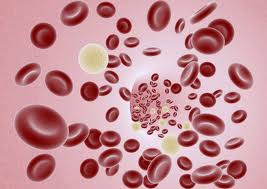 Bleeding disorders refer to conditions that keep your blood from clotting properly after a cut or injury. Women generally notice a problem because of heavy or abnormal menstrual periods. Heavy bleeding or menses is one of the most common problems women report to their doctors. In the U.S., one out of every five women report heavy bleeding.
Bleeding disorders refer to conditions that keep your blood from clotting properly after a cut or injury. Women generally notice a problem because of heavy or abnormal menstrual periods. Heavy bleeding or menses is one of the most common problems women report to their doctors. In the U.S., one out of every five women report heavy bleeding.
Signs of a possible bleeding disorder include:
- menstrual periods that last more than 7 days, gushing of menstrual blood that limit daily activities, passing of clots bigger than a quarter, and the need to change a tampon or pad every hour or more.
- low blood iron or anemia
- heavy bleeding after dental or other surgery, or during childbirth
- frequent nose bleeds (10 minutes or more)
- bleeding from cuts (longer than 5 minutes)
- easy bruising (weekly, raised, and larger than an inch).
- having one or more of the above symptoms plus a family member with a bleeding disorder such as von Willebrand disease or hemophilia.
If you have any of these symptoms, they should be discussed with your doctor. Bleeding disorders are common in women but many women are too embarrased to talk with their provider about it. They can be dangerous if not treated.
The U.S. Center for Disease Control (CDC) supports a network of specialized healthcare centers to prevent and reduce complications experience by people with certain blood disorders. Visit their site for more information.
On a personal note, one of my college professors was the doctor who developed one of the first tests (Quick Bleeding Time) used to help diagnose bleeding disorders and my first job after college was at a university that was researching blood disorders. At that time, we had a female teenager whose blood platelets (an irregular, disc-shaped element in the blood that assists with blood clotting; during normal clotting, the platelets clump together to trap fibrin threads that form a clot) were "slippery" and did not form clots when she experienced a cut. She was one of the very first identified cases of a condition that was given the name von Willebrand disease. We've come a long way in the last 4 decades in understanding and treating these and other diseases like hemophilia. In fact, many young people today do not even know what hemophilia is, yet is was a debilitating and deadly condition that played a major role in ending some historical Russian dynasties and often affects certain animals like thoroughbred horses. To read about its fascinating history click HERE.
